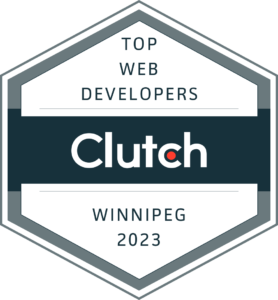How to Build an MVP?
You know what they say, the brilliant idea clicks at the most random, weird moments and when you least expect it. If you think MVP was born out of a bigshot, genius idea of a certain someone, think again.
It all started when a person was frustrated over not finding a desired pair of shoes in a mall and decided to build something that helped others like him. Yes, we are talking about Nick Swinmurn, who converted online shoe selling into a fully functioning business, Zappos, which was later taken over by Amazon for $1.2 billion.

MVP or Minimum Viable Product was born out of a business experiment that soon became successful. It is exactly what the name suggests, a product in its smallest, featureless appearance with just the basic bare minimum that represents your product.
In today’s article, we will take a step-by-step approach to analyze all aspects of MVP, including all that is valuable for every startup and any new products that a company is planning to launch in the market.
Why does a Company Need to Develop an MVP?
Here’s something that will explain the need for MVP better. The US Bureau of Labor Statistics suggests the stats for the survival of private enterprises in the country. According to the report, almost 20% of startups shut down within the first year of their inception. Almost 35% fail within two years, and only 30% of the businesses cross their ten years threshold.
Often, founders are left thinking about what went wrong despite spending a viable sum of money, energy, and time on their idea. Sometimes, concepts that look good in our heads may not withstand the fierce market competition. Therefore, MVP is the simplest way to assess the validity of a product/service in the market.
When Nick Swinmurn started his business, he first developed a basic website and put the pictures of the shoes there. Once he received the order, he would buy and ship the shoes to the customers. His approach did cost him money in the beginning. However, it paid off in the end.
This approach that he followed is what the experts call an MVP development in today’s market. The Minimum Viable Product is the low-cost version of a product that allows the business team to gain maximum validation with the least effort.
Purpose of MVP
People do not buy products because you are offering exotic features. People buy your product because it solves a certain problem in their lives. When you develop a product based on exclusive, over-the-top features, it naturally limits your audience to the handful of people who like to indulge in luxury. However, when you build a product that solves a problem, makes life easier, or is just a necessity, your product automatically stands apart in the crowd.
1. Find a Balance and Prove Viability
A Minimum Viable Product allows you to find the balance between what users want and what you have to offer. It allows you to balance the exotic and the necessity to give a product that is bound to be successful in the market.
An MVP helps you analyze whether your hypothesis will be successful in the market. It will allow you to figure out how likely it is that people will download your mobile app, use it, and share positive reviews and suggestions for improvements about your product.
2. Big Business With a Small Budget
When you generate an MVP, it dramatically cuts down the development time and cost required to invest in developing a full-fledged product. In MVP, you can go with minimum features and basic app design to solve an issue of your target audience. This allows the startups to launch in the market with a small budget and lower risks.
3. Valuable Feedback and Data
No company can ever be successful without the feedback of the customers and users. Today, the world runs on data like how many users visit your app/website in a week/month/year? How many users make a purchase? How much time do they spend interacting with the app?
This data allows you to improve your product, remove bugs and issues, and enhance the user’s commitment to your product. MVP helps you measure, learn, and better your product and the target audience. It eliminates risks and threats at the initial level without compromising your budget and effort.
How to Build an MVP?
“If you are not embarrassed by your product, you launched too late”- Ried Hoffman.
Entrepreneurs are so involved with the “Minimum” that they ignore the “Viable” in MVP. The consequence is a low-grade product that lacks content and fails to attract visitors and buyers. When this happens, the entrepreneurs look for solutions to these MVP problems.
However, the real problem is the lack of understanding of the development process and how to build an MVP. Here’s a step-by-step guide to building an MVP for a new product.
Step 1: Thorough Market Research
Research from CBIinsights suggests that almost 42% of startups do not provide any viable product that meets the need of the market. The lack of supporting market need is one of the strongest reasons for a failed product and startup.
Conduct surveys, understand the market and know the customer problems. This will help you comprehend your product better and know whether it fulfills the need of the customers the way they expect it to.
Your market research should be comprehensive and all-encompassing. While you are at it, don’t forget your rivals, competition around the world, the demand in your city, and the future expectations that come with the product. This insight tells you about the challenges, risks, and problems that are associated with your business model and will allow you to make the changes accordingly.
Step 2: Envisage Value Addition
The “why” is always important when you are selling a product. Before mapping out the MVP, ideate how your product will add value to your customer’s life? Why would they buy your product? How is it benefitting them?
These are some of the important questions that you need to ponder upon to plan an ideal MVP and a product. You should have a clear vision and estimation of your product. If you are outsourcing mobile app development, ensure that it contains all the core elements of your product. If you are introducing value to the buyers, make sure your MVP model implies the same.
Step 3: Design the User Flow
Convenience should be your priority when mapping your MVP. Employ staff augmentation to achieve the best results. If you are experimenting with your product, it does not mean you should settle for low quality. Outsource to some of the best designers in Silicon Valley that give you the most efficient results.
Always try to look from the user’s perspective. Remember, the app is made for the users and not for technicians. The complete process of engaging with the app should be seamless, easy, and quick for the audience. The user flow allows you to test the product as per the user’s satisfaction and gives you the scope for developing a better version in the future.
Step 4: Make MVP Features a Priority
At this stage, you need to list down all the features that you want incorporated into the MVP app. Listing the features is a prerequisite for remote mobile app development if you are outsourcing services.
When you have the list of features, it’s time to prioritize them according to the user’s needs and demands. When you are done, create a categorical list that describes the hierarchy of high, low, and medium priority features.
You can then add the features at various levels of MVP and gain feedback at each stage. This will also gradually grow your business, user base, and sales in the market. You can start with the high priority features at the initial level and move on to others after a few successful reviews.
Step 5: Get. Set. Go!
Once you have set your features and designed your product, you are all set to launch your MVP in the market. Remember, the idea is to create smart, not cheap. So to have a successful MVP model, you need to invest smartly, outsource to reliable companies, and pay attention to the market.
Moreover, you need to remember that MVP is lower than a final product, but at the same time, it is fully equipped to fulfill the user’s needs. Once it is easy to use, satisfies a particular need/demand in the market, and has the minimum viable features, it is ready to be launched!
Step 6: Build. Measure. Learn
MVP is all about learning and taking notes about your product. It is constantly testing the product and making it user-efficient. The path is clearly defined- first you develop, then you assess, and then you learn from the impact it has on the market.
Throughout this process, there is regular ongoing testing by a technical team that works on continuously making the product better. Other than that, there are also customer reviews, suggestions, and improvements that push the development process. With valuable feedback, you can assess the viability and compatibility of your product in the market.
Build Your Own MVP
Building an MVP requires a strong team that is focused on the goals of the product. Having a robust app development team will send you in the right direction. At the same time, it will help you in the learning and measuring process with a close watch on the market. Outsourcing to the right team thus decides the success of your product. Contact us now and learn more about how Greelow can help you to develop a successful project!
Awards
Top 5 IT Company in the Region
Clutch And The Manifest

Their full commitment to delivering the product on time was remarkable. We also appreciate the way they advised us beyond the technical part. We felt very accompanied through the whole proccess and the final outcome was incredible."
Diego Fernandez - Head of Marketing at GREENPEACE
Our Team

Javier Holcman
CEO

Jonathan Abel
Business Manager

Andrea Janna
HR Manager

Eze Wagmaister
Regional Director for Israel and EU

Romi Komarovsky
Head of Finance

Leo Holcman
Principal Engineer




